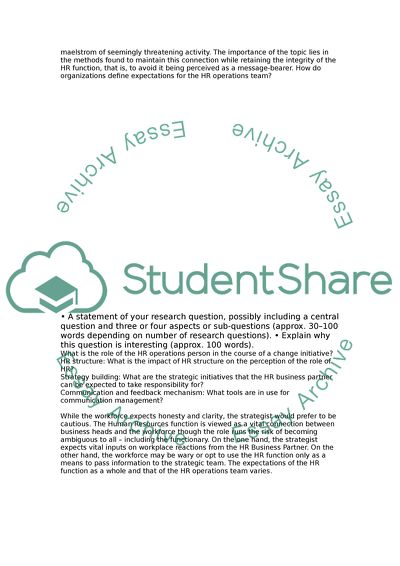Cite this document
(Role of HR Business Partners in Implementation of Change Management St Research Proposal, n.d.)
Role of HR Business Partners in Implementation of Change Management St Research Proposal. https://studentshare.org/human-resources/1744130-human-resources-the-role-of-hr-in-change-management
Role of HR Business Partners in Implementation of Change Management St Research Proposal. https://studentshare.org/human-resources/1744130-human-resources-the-role-of-hr-in-change-management
(Role of HR Business Partners in Implementation of Change Management St Research Proposal)
Role of HR Business Partners in Implementation of Change Management St Research Proposal. https://studentshare.org/human-resources/1744130-human-resources-the-role-of-hr-in-change-management.
Role of HR Business Partners in Implementation of Change Management St Research Proposal. https://studentshare.org/human-resources/1744130-human-resources-the-role-of-hr-in-change-management.
“Role of HR Business Partners in Implementation of Change Management St Research Proposal”. https://studentshare.org/human-resources/1744130-human-resources-the-role-of-hr-in-change-management.


